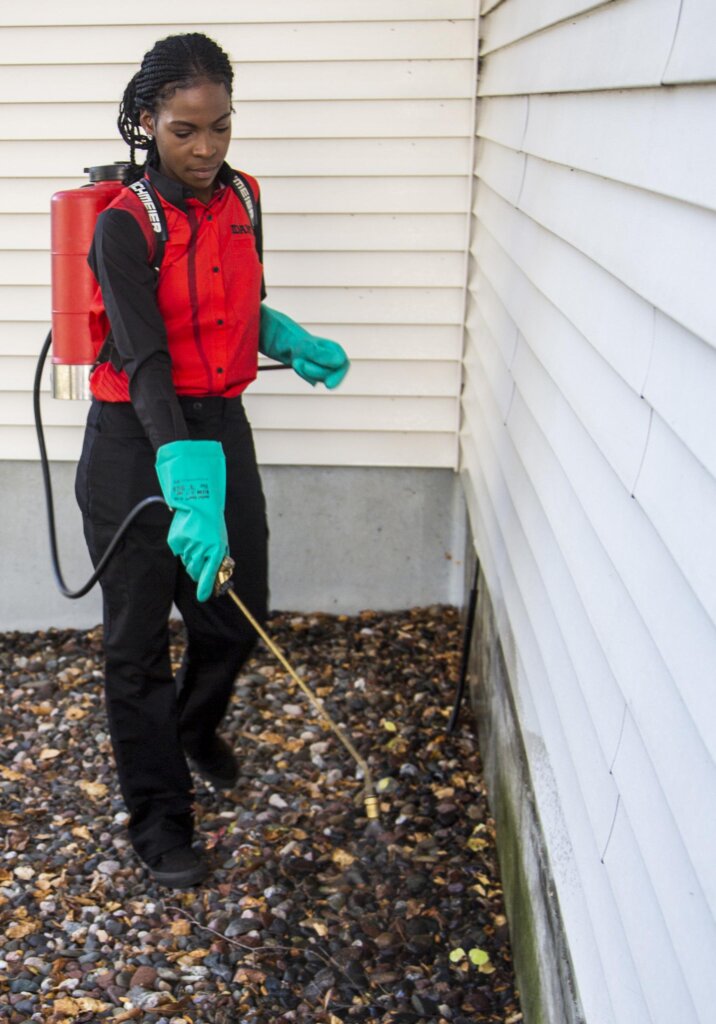Bed Insect Treatment Breakdown: Contrasting Chemical Vs. Non-Chemical Solutions
In the world of insect control, particularly when managing the consistent concern of bed bugs, the selection between chemical and non-chemical treatment remedies can be an essential one. Both approaches supply unique advantages and drawbacks, affecting variables such as effectiveness, safety considerations, and total price. By examining the nuanced information of each method, a clearer understanding of which path to seek in dealing with a bed insect infestation can be attained.
Efficiency of Chemical Therapies
Chemical treatments for bed insect invasions have actually been commonly identified for their powerful and rapid effectiveness in removing these pests. When taking into consideration the effectiveness of chemical therapies, it is vital to understand that they can give a thorough and fast option to a bed bug issue. Expert pest control specialists frequently rely upon pesticides to target bed insects at different stages of their life cycle, including eggs, grownups, and fairies. These chemicals typically function by interfering with the bed bugs' anxious system, resulting in paralysis and ultimate fatality.
Additionally, chemical treatments have the benefit of supplying recurring impacts, indicating that they can proceed to eliminate bed bugs also after the initial application. This recurring activity is particularly advantageous in combating any kind of prospective re-infestations. Additionally, the rapid activity of chemical therapies can bring relief to people dealing with severe bed bug invasions, allowing them to regain control of their space quickly.
Security Interest In Chemical Solutions
One essential element that requires mindful consideration when utilizing chemical solutions for bed insect treatment is ensuring the safety of residents and the environment. Direct exposure to certain chemicals made use of in bed pest therapies can lead to breathing problems, skin inflammation, or various other unfavorable responses, specifically in individuals with pre-existing problems or level of sensitivities.
Furthermore, the environmental influence of chemical remedies is another considerable factor to consider. Some pesticides made use of in bed insect therapies might be harmful to valuable pests, wildlife, and environments if they seep right into the soil or water supply. It is necessary to utilize chemical treatments deliberately, adhering to safety standards, and taking into consideration much less poisonous alternatives to reduce these dangers and ensure the effective and secure monitoring of bed insect infestations.
Benefits of Non-Chemical Techniques
Considering the potential safety and security issues and environmental impact connected with chemical options for bed pest treatment, checking out non-chemical strategies presents a promising option with several unique advantages. Non-chemical approaches use a much safer alternative for homes, particularly those with people, children, or animals sensitive to harsh chemicals. These strategies remove the risks website link of exposure to poisonous compounds, minimizing the potential for unfavorable wellness effects. In addition, non-chemical therapies are ecologically pleasant, as they do not add to air or water air pollution, making them a sustainable choice for parasite control.
In addition, non-chemical solutions can be efficient in targeting bed pests, consisting of hard-to-reach areas where chemical treatments may not penetrate - A1 pest control services charlotte. Techniques such as heat therapy, vacuuming, steam cleansing, and cushion encasements offer thorough eradication without the use of dangerous chemicals.
Limitations of Non-Chemical Treatments

In addition, non-chemical therapies frequently need multiple applications to achieve successful removal. This can be lengthy and may not constantly guarantee total elimination of all bed pests and their eggs, particularly in hard-to-reach or surprise areas.
Additionally, the success of non-chemical treatments greatly counts on proper implementation and thoroughness, which can be challenging for individuals without specialist competence. Inadequate application of non-chemical techniques may lead to insufficient obliteration, resulting in relentless problems and the requirement for additional therapies.
Consequently, while non-chemical therapies have their advantages, it is vital to recognize these limitations and consider them when identifying one of the most reliable technique for handling bed insect infestations.
Expense Contrast: Chemical Vs. Non-Chemical Options
Provided the constraints associated with non-chemical therapies, local termite treatment a crucial facet to examine in the context of bed bug administration is the cost comparison between chemical and non-chemical choices. Chemical therapies usually include the application of pesticides by experts, which can range from $250 to $900 per area, depending upon the seriousness of the problem and the dimension of the area to Look At This be dealt with. In contrast, non-chemical therapies like warm therapy or heavy steam can be more expensive, with expenses ranging from $1,000 to $6,000 for an entire home. While the preliminary expense of chemical treatments might appear reduced, multiple treatments might be needed to completely remove the problem, potentially enhancing the total expense. On the other hand, non-chemical choices may provide a more lasting and eco-friendly option, although they can be cost-prohibitive for some individuals. Inevitably, when thinking about the cost of bed bug treatment options, it is very important to evaluate the upfront expenses versus the effectiveness and long-term sustainability of the picked technique.
Conclusion

Considering the potential security worries and environmental influence connected with chemical remedies for bed insect therapy, discovering non-chemical strategies provides an appealing alternative with several unique benefits.Given the restrictions associated with non-chemical treatments, a necessary aspect to examine in the context of bed bug administration is the cost comparison in between chemical and non-chemical options. In contrast, non-chemical therapies like warm therapy or vapor can be much more expensive, with prices ranging from $1,000 to $6,000 for a whole home. While the initial expense of chemical treatments might appear lower, numerous treatments may be needed to completely eliminate the problem, possibly enhancing the general price.In final thought, when comparing chemical and non-chemical bed insect therapy choices, it is important to take into consideration efficiency, security, benefits, limitations, and cost.
Comments on “A1 Charlotte Pest Control Companies - Your Regional Pest Professionals”